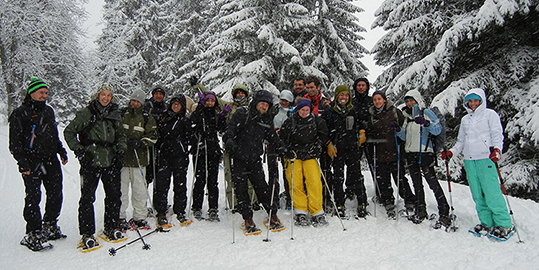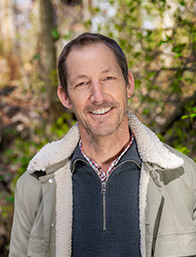
The Spatial Ecology group at the University of Lausanne is specialized in predictive habitat distribution modeling, mainly at the level of species, but also sometime at the level of communities and habitat types.
This approach is currently being developed and tested as tools for the management or rare and endangered species, for evaluating the invasive potential of neophytes plant species, for evaluating landscape diversity and fragmentation, as well as for preparing scenarios of climate change impact on plant species distribution, diversity and communities.
More dynamic models are also being developed for simulating the spread of species in the landscape, for instance after a climatic change or to simulate invasion processes. Finally, the set-up of permanent observation plots for monitoring the flora and fauna is another development of our group. It aims at testing, in a near or later future, the validity of our models and scenarios.
Our preferred study areas are alpine landscapes of the Swiss Prealps of Vaud and the national scale. Modeled species include Eryngium alpinum (rare and threatened) and Ambrosia artemisiifolia (invasive). We also use simulation, such as virtual species in a real landscape, to solve methodological problems and questions.
This approach is currently being developed and tested as tools for the management or rare and endangered species, for evaluating the invasive potential of neophytes plant species, for evaluating landscape diversity and fragmentation, as well as for preparing scenarios of climate change impact on plant species distribution, diversity and communities.
More dynamic models are also being developed for simulating the spread of species in the landscape, for instance after a climatic change or to simulate invasion processes. Finally, the set-up of permanent observation plots for monitoring the flora and fauna is another development of our group. It aims at testing, in a near or later future, the validity of our models and scenarios.
Our preferred study areas are alpine landscapes of the Swiss Prealps of Vaud and the national scale. Modeled species include Eryngium alpinum (rare and threatened) and Ambrosia artemisiifolia (invasive). We also use simulation, such as virtual species in a real landscape, to solve methodological problems and questions.
Advanced search is available through Serval
Publications can be managed by accessing Serval via MyUnil
Phd thesis
Publications (22)
Group Leader
Post-Docs
Graduate students
Master Students
Previous group member
- Dr. Nezahat Pinar Barkan
- Dr. Frank Breiner
- Aline Buri
- Juan Imanol Cabana
- Dr. Mathieu Chevalier
- Dr. Carmen Cianfrani
- Dr. Flavien Collart
- Dr. Manuela D'Amen
- Patrice Descombes
- Laura Desponds
- Dr. Valeria Di Cola
- Michele Di Musciano
- Anne Dubuis
- Alexia Dufour (Student PhD)
- Ludovic Dutoit
- Dr. Robin Engler
- Rui Fernandes
- Dr. Ruben Mateo Garcia
- Jacqueline Gehrig-Fasel (Student PhD)
- Johachim Golay
- Dr. Willem Hordjik
- Gwenaëlle Le Lay (Postdoc)
- Michael Lütolf (Student PhD)
- Ramona Maggini
- Dr. Luigi Maiorano
- Lukas Matthys (Student PhD)
- Dr. Florent Mazel
- Maria Claudia Melo Pacheco de Medeiros
- Dr. Heidi Mod
- Dr. Christine Moos (site de Sion)
- Charlotte Ndiribe
- Mila Pajkovic
- Loïc Pelissier
- Blaise PetitPierre
- Eric Pinto
- Dorothea Pio (Student PhD; co-supevising by Prof. Salamin)
- Patricio Pliscoff
- Dr. Julien Pottier
- Jean-Nicolas Pradervand
- Christophe Randin (Student PhD)
- Sophie Rickebusch (Student PhD)
- Dr. Federico Riva (Postdoc)
- Dr. Daniel Scherrer
- Joana Vicente (co-supervising by Joao Honrado, Porto)
- Dr. Pascal Vittoz

